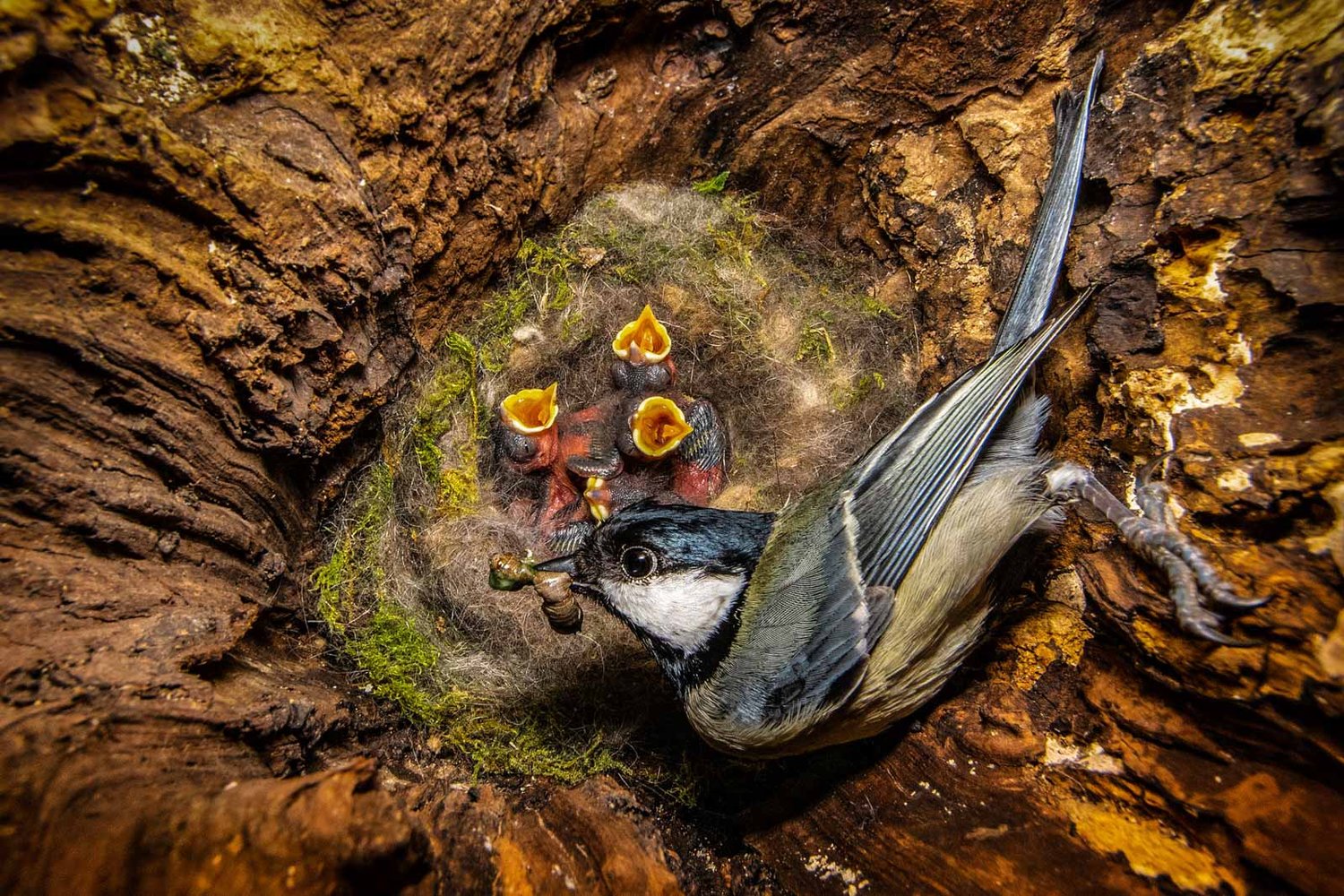
The selected winners of the 2023 British Wildlife Photography Awards were chosen from over 13,000 images and put the wonders of the world on full display.

The selected winners of the 2023 British Wildlife Photography Awards were chosen from over 13,000 images and put the wonders of the world on full display.
Good news, folks. The wonderful world of the wild is still beautiful and humming with life. There’s no better proof than the winners of this year’s annual British Wildlife Photography Awards.
Over 13,000 photographs were submitted for the 2023 competition, which features categories for both adult and youth amateur photographers. Founded in 2009, the competition aims to celebrate the talents of photographers in the UK, as well as encourage exploration and conservation of our natural heritage, according to the BWPA.
From quiet scenes in the woods to life abounding in urban areas, the photographs exhibit just how full of wonders the world really is. All of the winning photographs will be printed in a hardcover coffee table book with a moving foreword written by Dame Judi Dench, available on the BWPA website. And if you are so inclined, entries for next year’s awards are now open for submissions.
So, with that, we’ll get to the images.
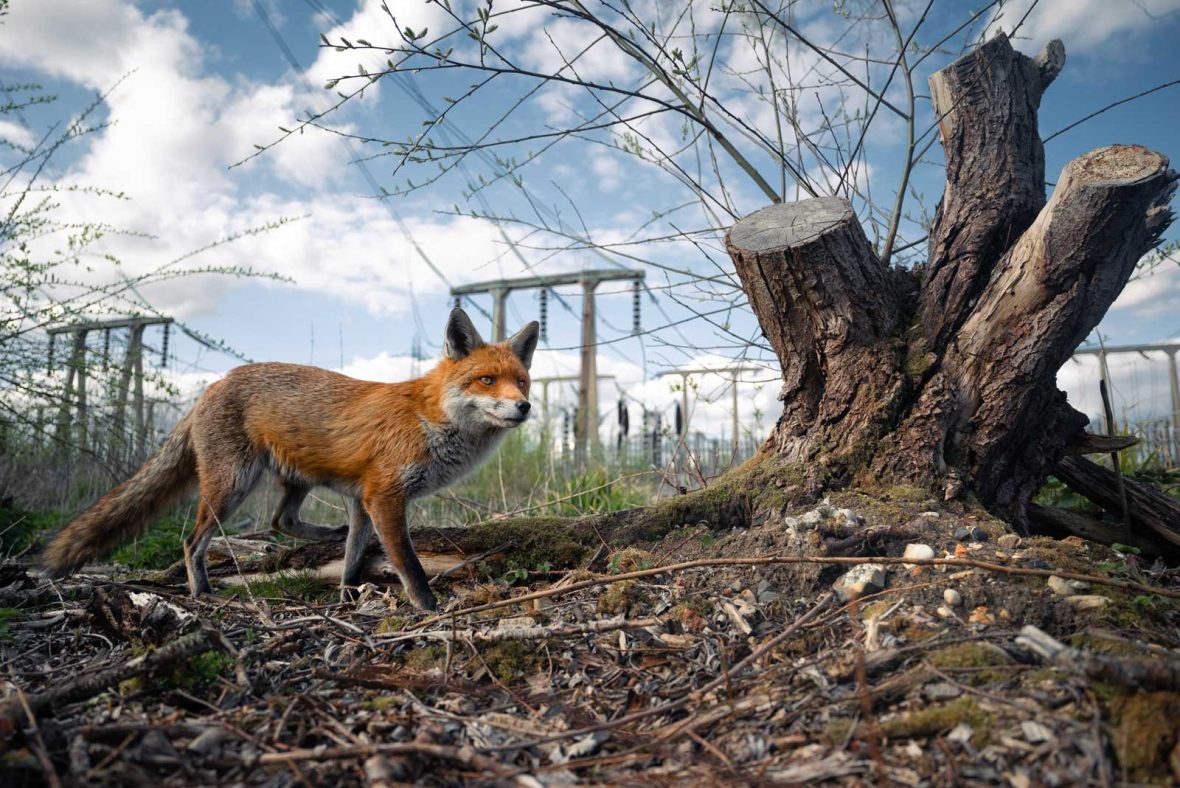
Overall Winner
“A Look to the Future” by Charlie Page
Species: Red fox
Location: Lee Valley Park, England
Photographer’s statement: “I knew this area was reliable for foxes, and I wanted a shot with the industrial backdrop. One day when setting up my camera with a remote shutter release, a fox approached from my left. Hesitant about what to do, I stayed still, and surprisingly the fox stopped right in my frame. I took the shot but was confused why it had come so close. In hindsight, this encounter probably tells the story more than the photo itself. Wildlife has become used to us encroaching on them. I think the felled tree and longing look on the fox’s face portray this tragedy perfectly. I hope that all wildlife photography doesn’t look like this in years to come.”
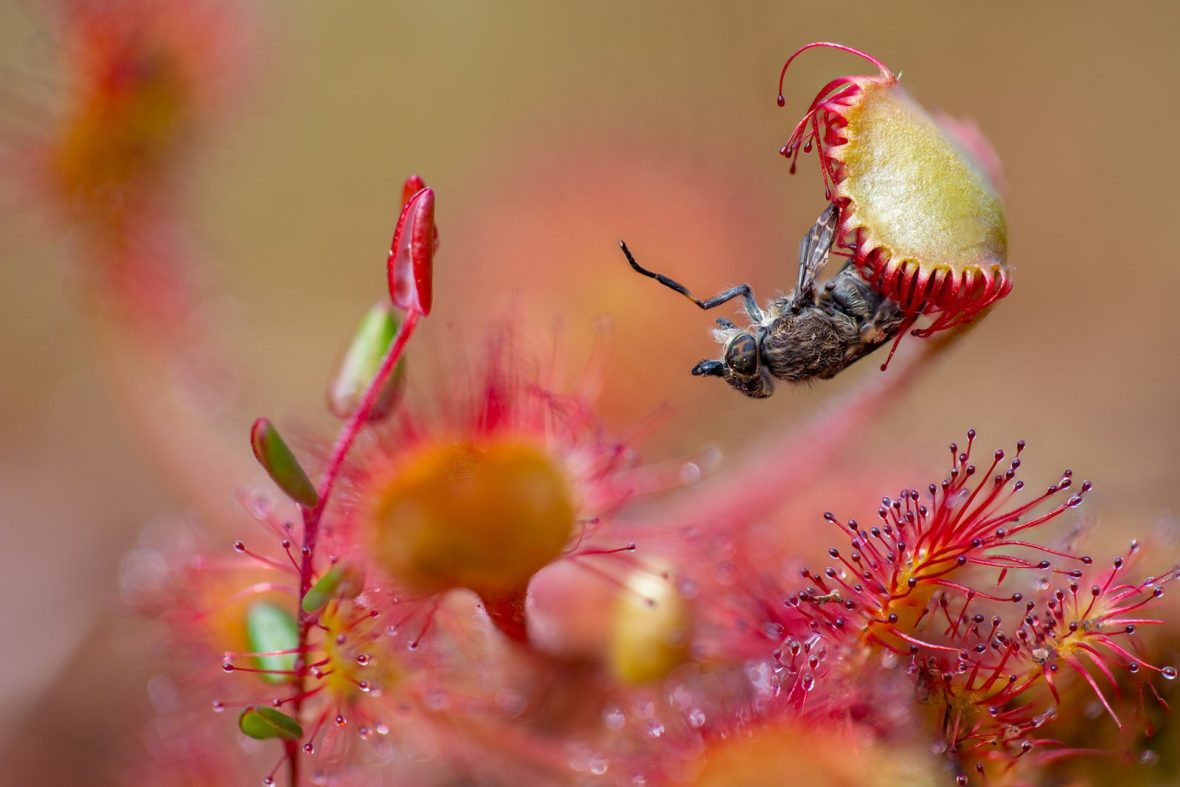
Botanical Britain Category Winner
“A Poet’s Lunch” by Matt Doogue
Species: Sundew, Horsefly
Location: Devilla Forest, Scotland
Photographer’s statement: “A 4.30 am alarm to get to Devilla Forest for some early morning butterflies resulted in me finding my first ever Sundew. It was even better that it had prey! Then, when I discovered it had actually snared a horsefly, I was extremely excited. There’s something poetic about the piece: the horsefly, known for biting us, was ‘bitten’ by the Sundew. This is a handheld, stacked image consisting of 30 images to ensure complete focus of the scene.”
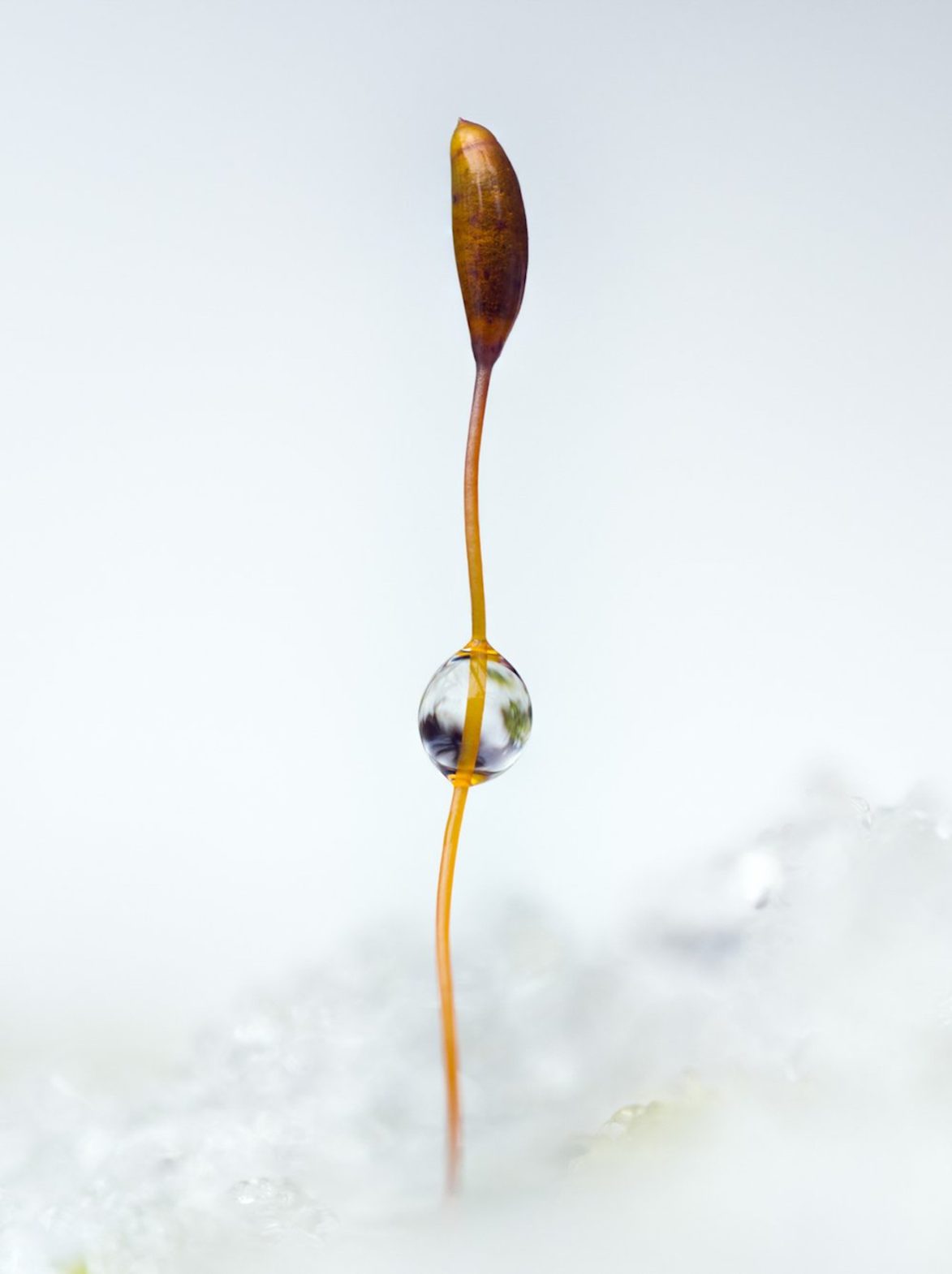
Botanical Britain Category Runner-Up
“Snow Globe” by Geraint Radford
Species: Moss sporophyte
Location: Swansea, Wales
Photographer’s statement: “During a walk through a snowy forest, I was exploring the macro world in search of interesting scenes. I was delighted to have spotted this moss sporophyte and a perfectly placed water drop. Taken handheld and using natural light, I captured a sequence of 10 images for a focus stack which would allow me to achieve enough depth of field.”
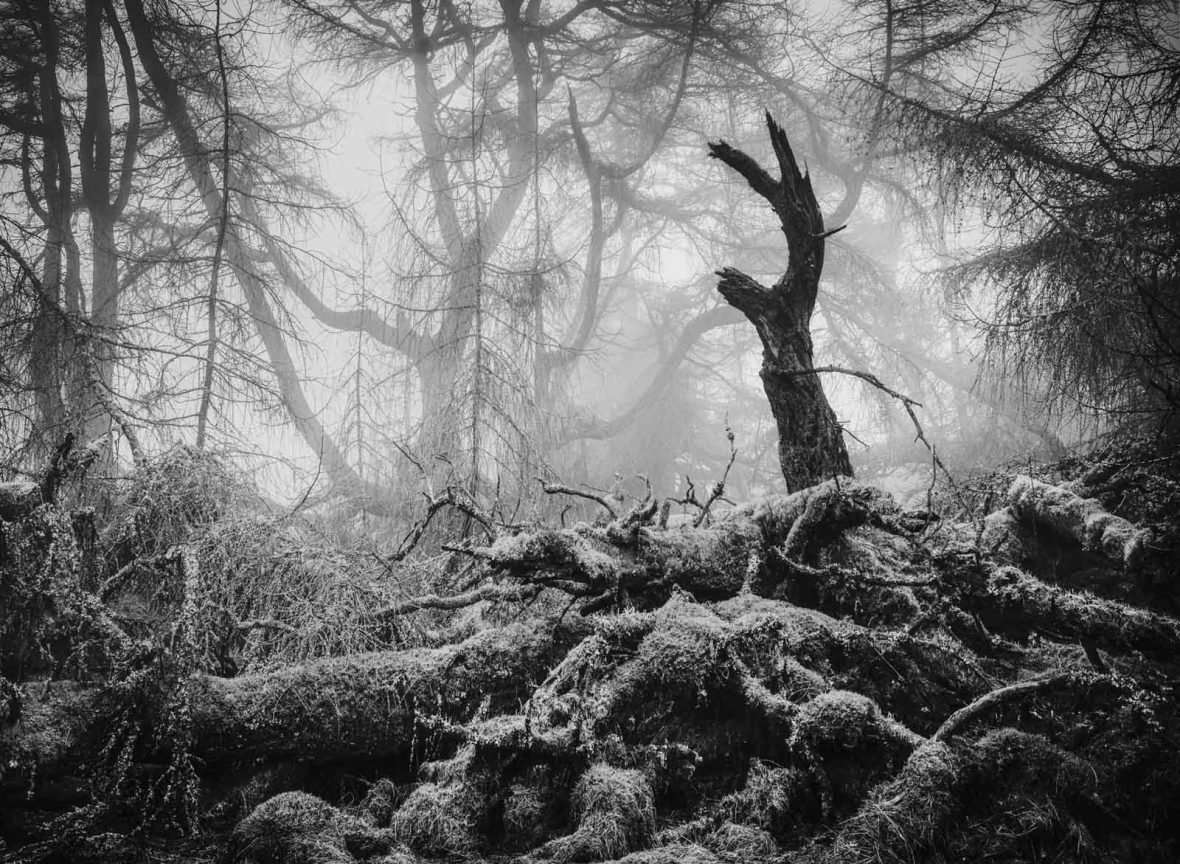
Black & White Category Winner
“Great Mell Fell” by Matthew Turner
Location: Lake District, England
Photographer’s statement: “I spent a good few hours on this foggy morning exploring the wooded eastern contours of Great Mell Fell in the Lake District. This is a strange and otherworldly place, with gnarled bark, distorted branches, and dank moss everywhere. I clambered through the jumble of fallen trees and eventually stumbled upon this decaying specimen, which to me looked like a claw reaching out from the decomposing pile of tree carcasses beneath. I used my tripod to avoid any camera shake due to the dark and dingy conditions which suited the scene perfectly.”

Black & White Category Runner-Up
“Soaring” by Paula Cooper
Species: Gannet
Location: Bass Rock, Scotland
Photographer’s statement: “I took this image from a boat trip to Bass Rock, looking up at the towering cliffs and the gannets soaring above it. I wanted to show the drama of the place so converted it to black and white and darkened the image. I had been lucky enough to also land on the island a few days before and had been able to photograph this huge breeding population of gannets close up, which have been totally devastated this year by avian flu hitting the island.”
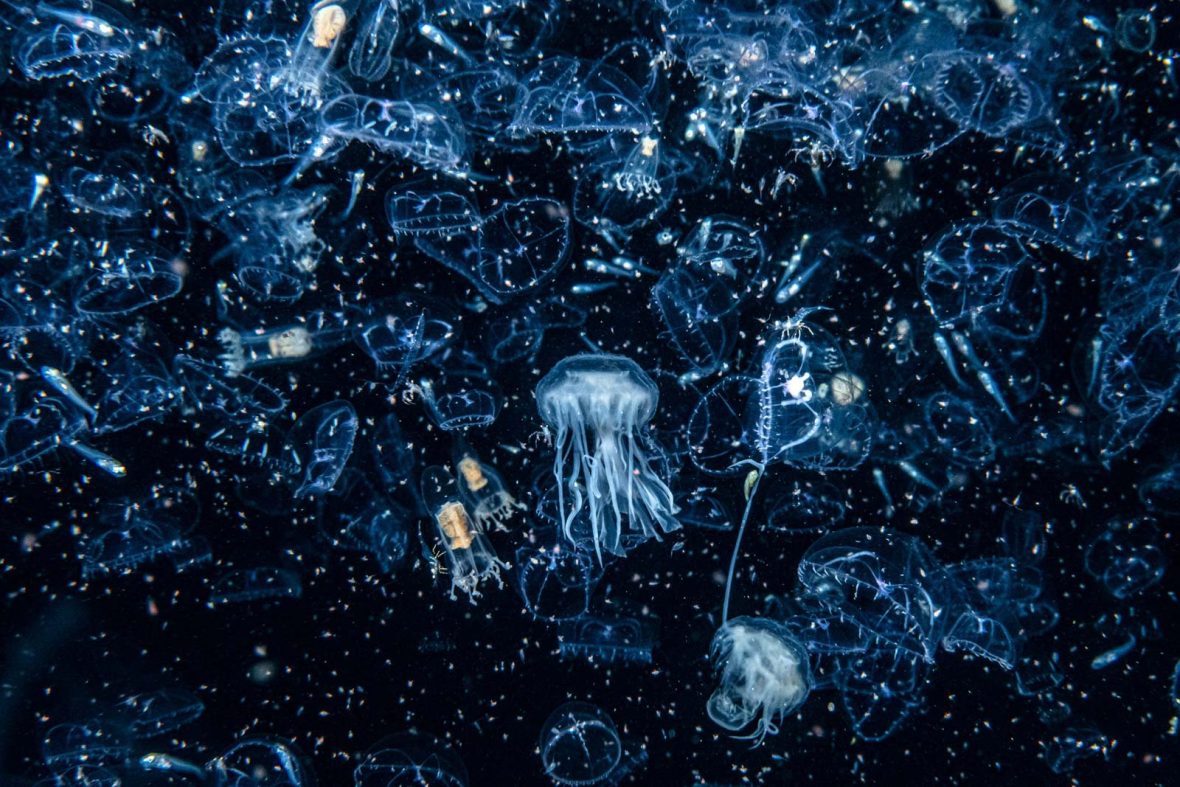
Coast & Marine Category Winner
“Welcome to the Zoo(plankton)” by Henley Spiers
Species: Jellyfish
Location: Shetland, Scotland
Photographer’s statement: “One night in Shetland, I came face-to-face with plankton on a scale, unlike anything I had experienced before, snorkeling amidst a plankton bloom so thick that, at times, I was unable to see through it. To the naked eye, it looks like a million peach-colored spheres, as if the contents of a bean bag had spilled over the sea, but my macro lens reveals a mass of tiny organisms. Plankton takes two forms: The first is phytoplankton, which is made up of plants and forms the base of the food chain. Zooplankton, made up of animals, sits on the next rung up. I am in the midst of the zoo here—a rich tapestry of tiny animals pulsating all around. Some are too microscopic to recognize, but others I can discern. Larval-stage crustaceans abound, some swimming through the darkness, others clinging to the life rafts offered by broken-off seaweed. This plankton soup has attracted an army of jellyfish, who feast upon the buffet of miniature life.”

Coast & Marine Category Runner-Up
“Alien Bobtail” by Kirsty Andrews
Species: Bobtail squid
Location: Paignton Pier, Devon, England
Photographer’s statement: “Taking photos underwater at night, it is possible to see a range of species not always visible during the day. Bobtail squid are out hunting at night and their stunning neon colors catch my torch and strobe lights. They often patrol over sand patches hunting for prey, such as tiny shrimp. In this case, there was a lot of sand suspended in the water, but rather than trying to remove the sand from the shot I felt it added to an otherworldly atmosphere.”

Habitat Category Winner
“Stag by the Loch Side” by Neil McIntyre
Species: Red deer
Location: Western Highlands, Scotland
Photographer’s statement: “This stunning location is one I visit frequently with the very hope that I might get opportunities just like this. It’s a wide glen with a loch, spectacular mountain backdrops and, of course, the resident deer. On this occasion, I noticed this stag moving along the side of the loch, but I wanted him against a bright patch in the scene. There was just such an area, albeit very small, and he was heading in that direction. I moved into position and waited until he made his way along the ridge; sure enough, he walked right through the light patch.”

Habitat Category Runner-Up
“Looking at You” by Peter Bartholomew
Species: Mountain hare
Location: Cairngorms, Scotland
Photographer’s statement: “Deep snow drifts had left ridges and contours on the plateaux. Visibility was limited as strong winds buffeted the cornices and snow swirled down the valley. Across the bowl, the male hare moved slowly towards the female hare above it and stopped. For a moment, the blizzard abated, allowing me to capture the hares in their special mountain environment.”
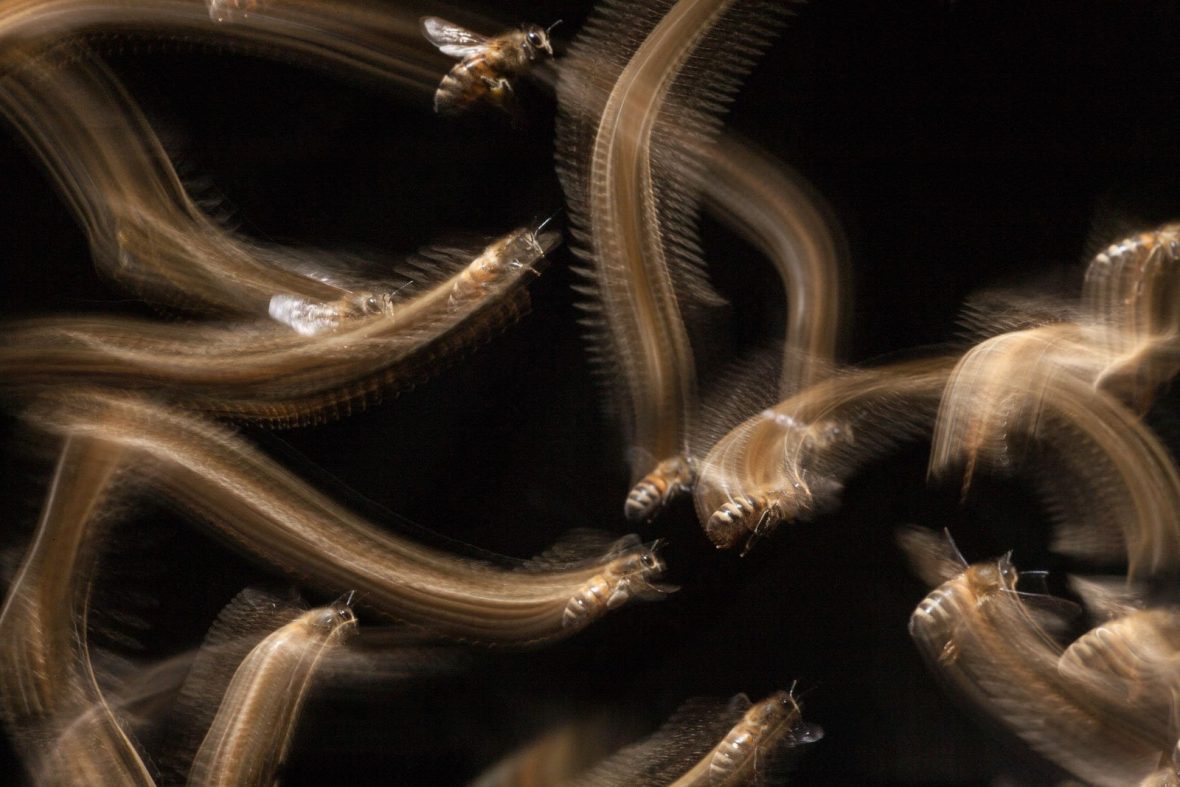
Hidden Britain Category Winner
“Honey Bee Flight Trail” by John Waters
Species: Western honey bee
Location: Bristol, England
Photographer’s statement: “Honey bees leave ‘light trails’ as they approach their hive entrance. This shot was taken in a small wildlife-friendly garden in Bristol where my partner keeps bees. I spent hours watching the bees, trying to work out how I could show their comings and goings in a way that would convey a sense of movement—their ‘busyness’. I used a slow shutter speed (0.3 secs) and second-curtain flash to ‘freeze’ the bees after they had made their light trails.”
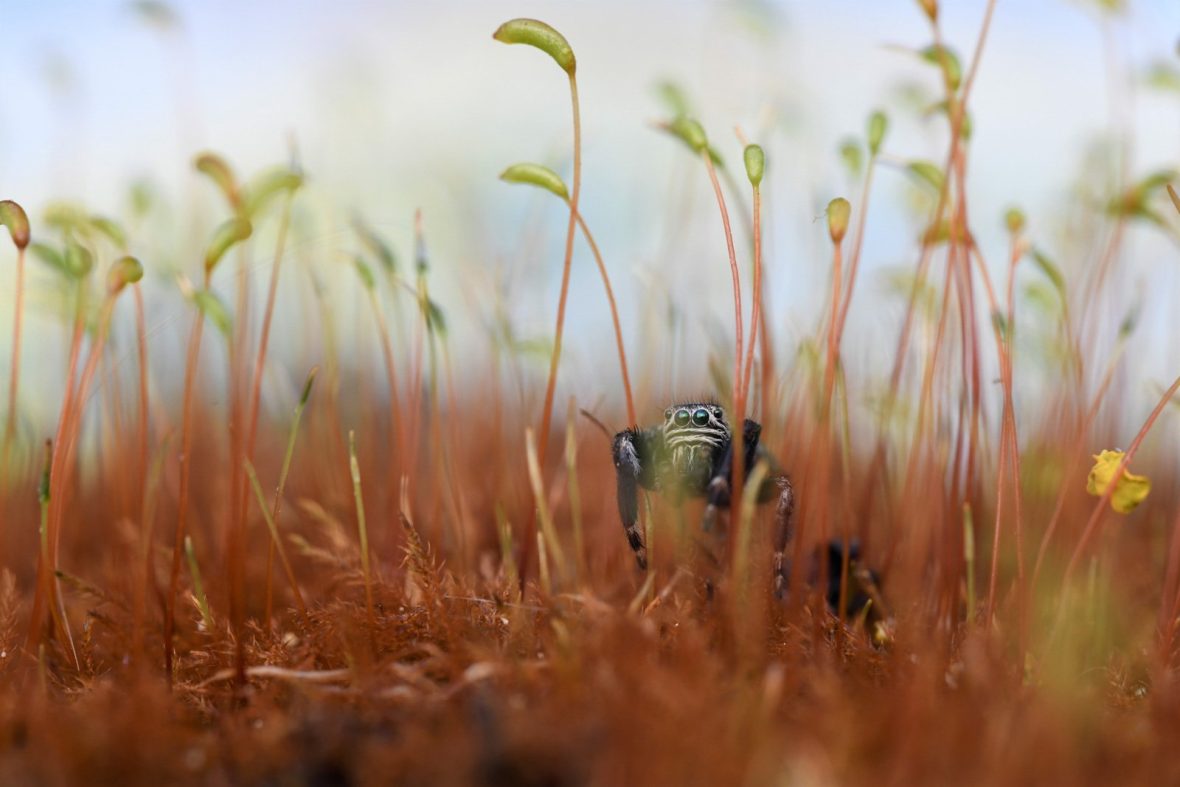
Hidden Britain Category Runner-Up
“Metallic Jumping Spider in Moss” by Will Atkins
Species: Jumping spider
Location: Dorset, England
Photographer’s statement: “The metallic jumping spider is a heathland specialist, hunting its prey in the heather jungle of its environment. The tiny moss plants tower above the spider in this photo, emphasizing the small physical size of the spider, though—like all ‘jumpers’, with their big central pair of eyes and innate curiosity—they are big in terms of character! Like a lot of macro work in the field, I was on my belly to get the animal’s perspective, but it was worth it for the ‘eyeball-to-eyeballs’ view.”
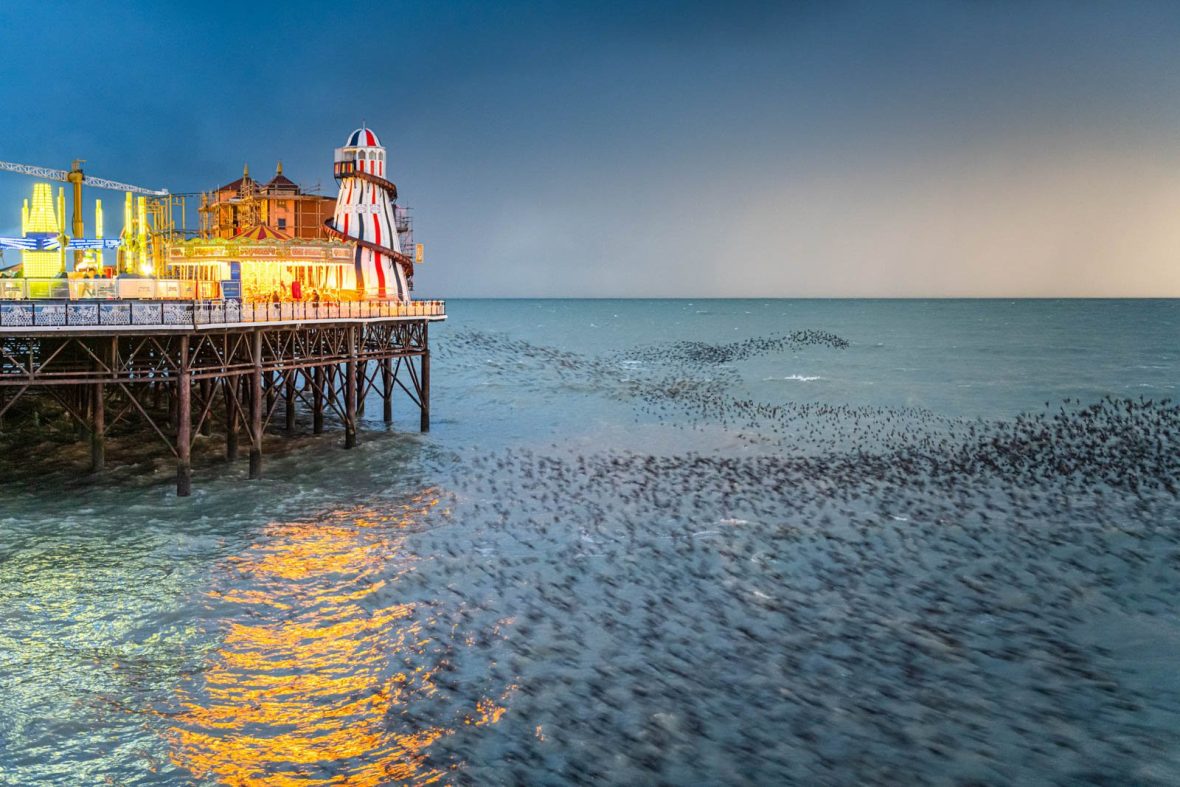
Urban Wildlife Category Runner-Up
“Helter Skelter” by Matthew Cattell
Species: Starling
Location: Brighton, England
Photographer’s statement: “Every night during the winter, Brighton plays host to a spectacular murmuration of starlings. On this particular evening, an approaching storm was illuminating the horizon, and as the light levels dropped, the brightness of the sky balanced with the lights on the Palace Pier. I switched to a wide-angle lens, intending to include the helter-skelter and its reflection in my photograph, and waited. As the starlings arrived to roost, they swept across the sea, producing graceful, elegant curves across my viewfinder. I particularly love the shape of their movement in this photograph.”
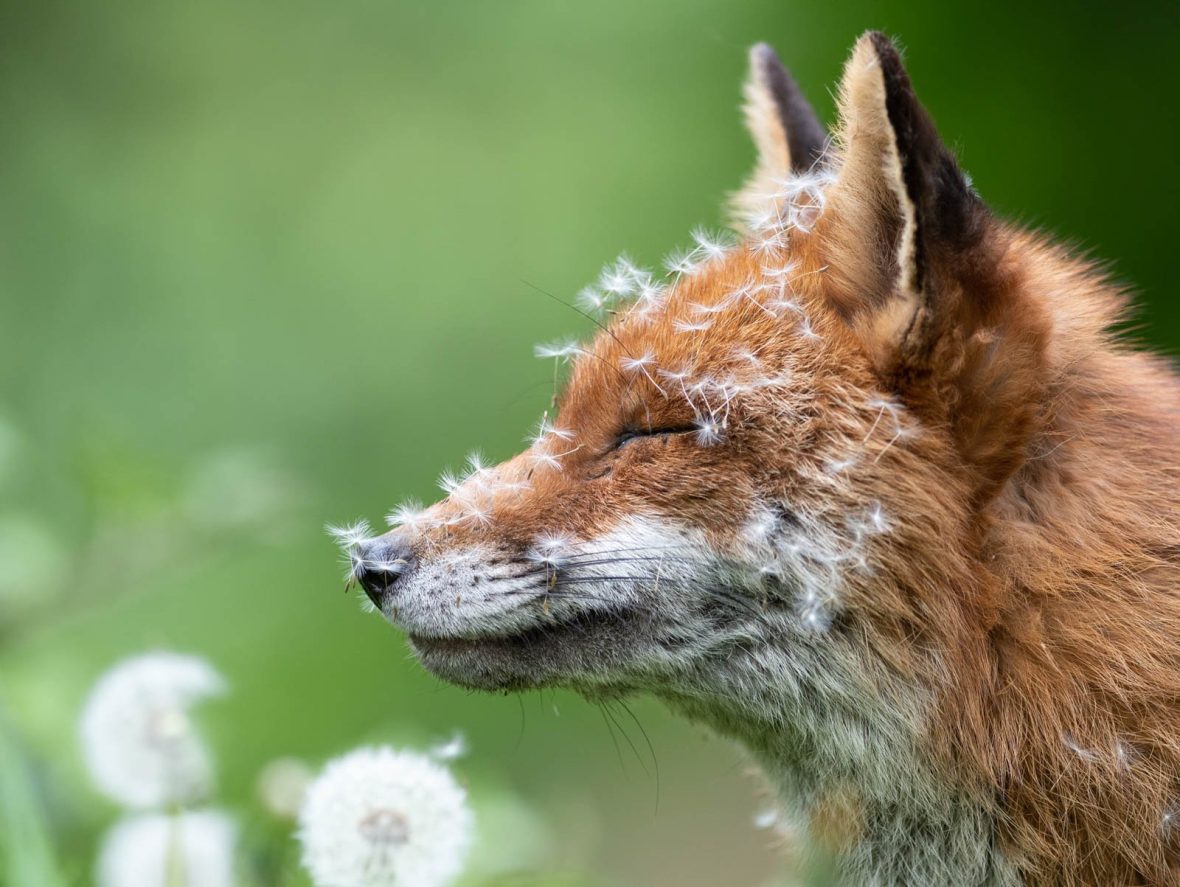
Animal Portraits Category Winner
“Sleeping With Dandelions” by Lewis Newman
Species: Red fox
Location: London, England
Photographer’s statement: “After spending a lot of time with this particular vixen, she began to learn I was not a threat. This gave me some great photographic opportunities. I got to know her routine, and as the wildflowers began to grow, I would find her curled up amongst them. As the dandelions began to open, there were a couple of days when she would wake up covered in them. Although she got used to my presence, if I were to move too fast or drop anything, she would immediately leave. Later on in spring, I was blessed with her bringing her cubs to me, and have watched them grow ever since.”
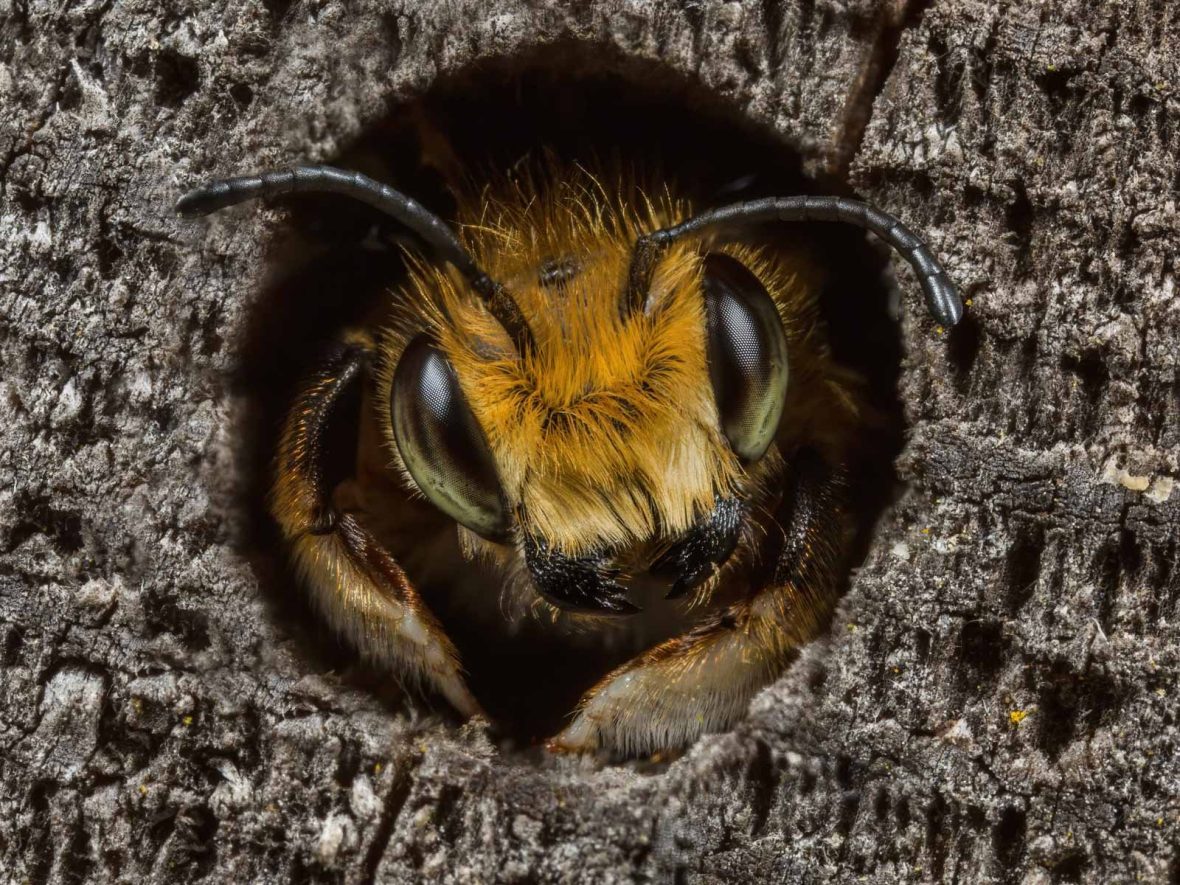
Animal Portraits Category Runner-Up
“Willoughby’s Leafcutter Bee” by Ed Phillips
Species: Willoughby’s leafcutter bee
Location: Staffordshire, England
Photographer’s statement: “I have a particular interest in the UK’s solitary bees and like to photograph the species that visit our Staffordshire garden. I had seen this male Willoughby’s leafcutter bee looking out of a hole, but it kept retreating whenever I approached. They often pause to warm up at the entrance before flying off, so I waited, camera poised for the right moment. It eventually reappeared, and I carefully framed the shot. At the last moment, it cocked its head to one side to what I felt was a pleasing angle.”
____
What a way to kick off astronomical spring in the northern hemisphere, eh? To see the rest of the category winners, runners-up and honorable mentions, check out the BWPA Winners page here.
Hailing from all across the globe, Adventure.com's team of editors is at the forefront of what's happening (and what's not-so-happening) in the world of travel and adventure.


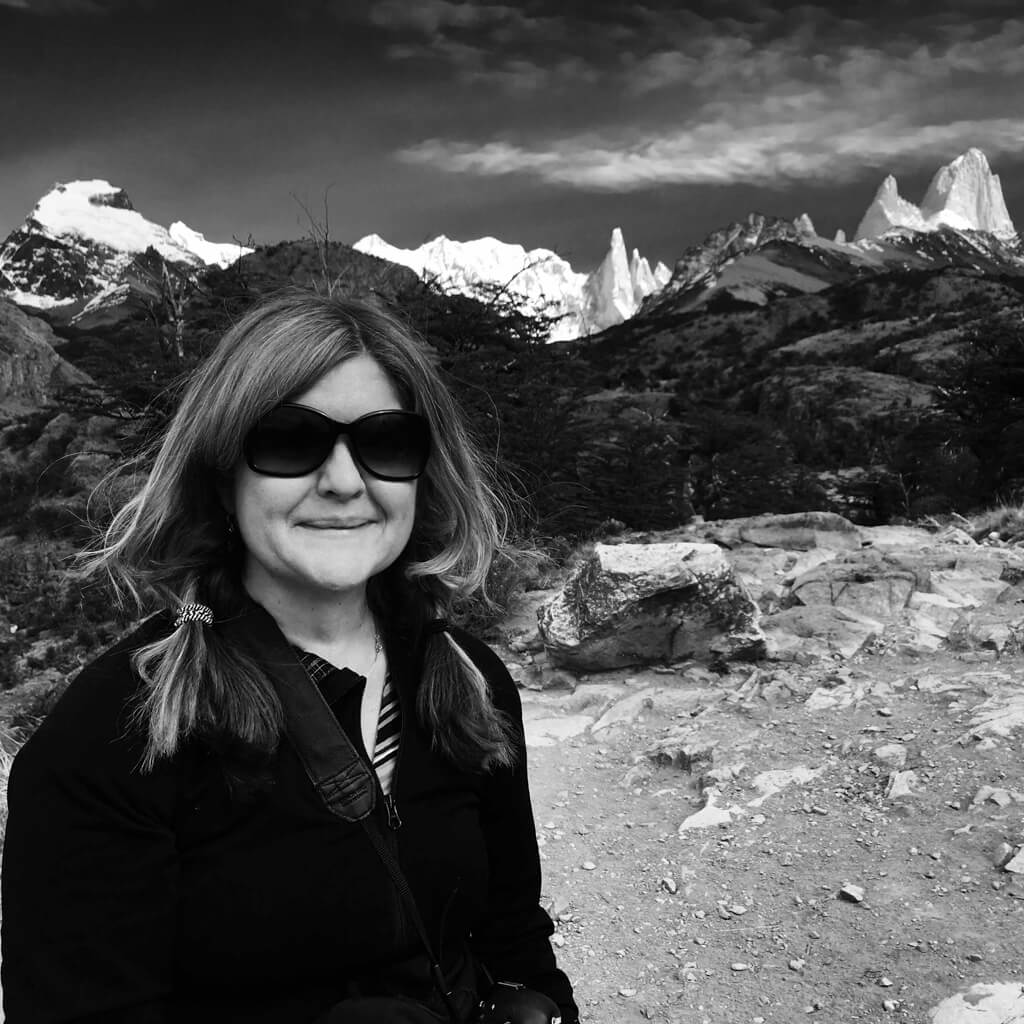



Can't find what you're looking for? Try using these tags: